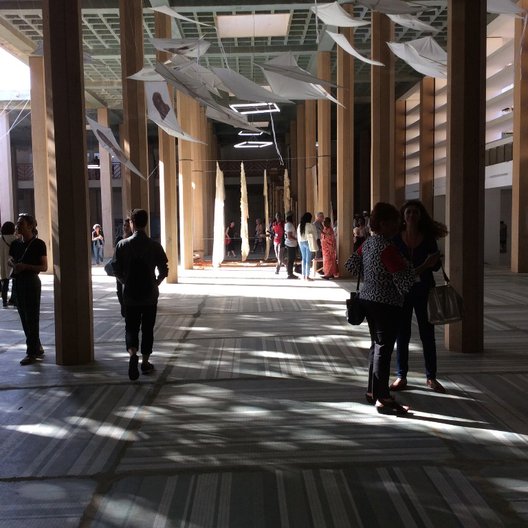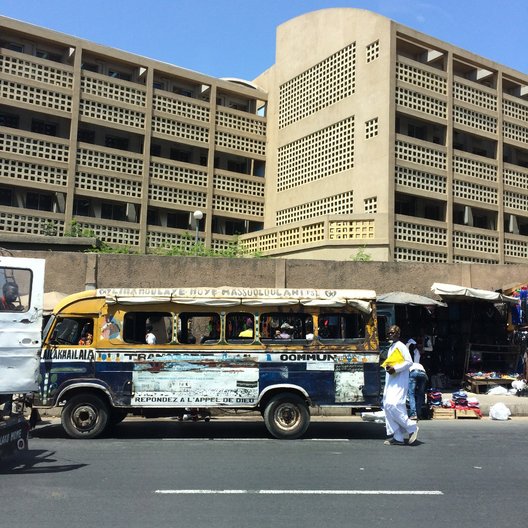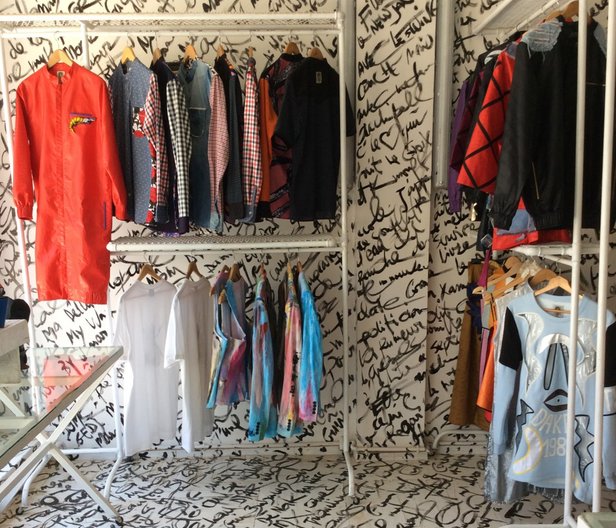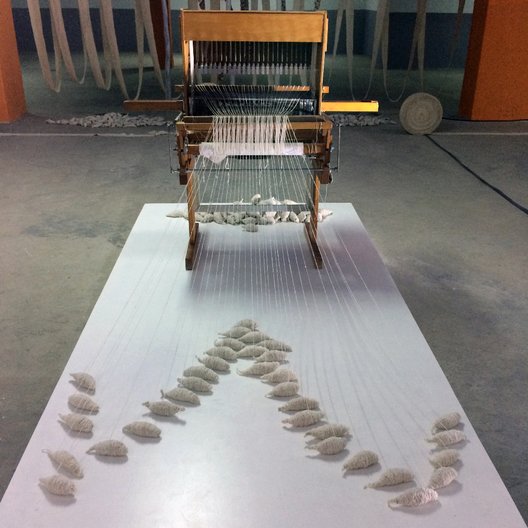31 May 2018
by Yemi Awosile
Yemi Awosile a Textile Designer and a recent Fellow at the Stanley Picker Gallery, Kingston University is one of the six recipients of the British Council Art Connects Us research grant, which supports our vision to develop stronger creative sectors in Sub-Saharan Africa and connections with the UK. Below Yemi shares her experiences from her recent travels to Senegal to meet local artist and textile designers.
As part of my research at the Stanley Picker Gallery I was lucky enough to visit Senegal during the opening days of the Dakar Biennale. 2018 marks the 13th year of the international contemporary African Art Biennale and I found this journey to be one of the most exhilarating research trips that I have ever embarked upon. I joined Maureen Salmon (Senior Lecturer and Researcher from the University of the Arts London) and Alberta Whittle (Barbadian artist, researcher and educator) in Dakar where we visited exhibitions and studios around the city. As a creative practitioner who formerly trained as a textile designer I am always interested in exploring textile practices. This trip gave me a new insight into Senegalese textiles through a contemporary African art perspective. I developed a new found appreciation for the social systems which underpin art and design practices; and the trip raised new questions about audience engagement and the different methods of creating new platforms for sharing and making work.
Through my personal practice I’m particularly interested in the community aspect of art and design so I was particularly excited to visit the showroom of Senegalese Fashion Designer Selly Raby Kane in the very early stages of the trip. The showroom is a vibrant space based in Sacre Coeur where the walls and the objects feel like an extension of the fashion garments on display. Selly Raby Kane kindly welcomed us into the space and talked us through her creative vision for her brand. The garments and interiors are covered with coded design references reflecting unique aspects within Senegalese youth culture. A large part of her appeal is her experimental vision and her cross-disciplinary approach within her workspace. The showroom itself is full of garments which embody a huge range of textile processes from multi-media surface patterns, fabric manipulation, stitch and experimental print. The roof top of the showroom houses a workshop and studio space which is open to artists working both inside and outside of the field of fashion and textiles. Some of the works included 3D sculptures made from reclaimed materials repurposed from the local urban environmental and large-scale functional interior architectural pieces. The most striking and endearing aspect for me is the relationship between the body of work in the showroom and the busy art space located above the shop over-looking the local neighbourhood on the building’s rooftop.
Another visit which I particularly enjoyed was the exhibition of Textile Artist and Designer Johanna Bramble. She produces hand woven textiles and splits her practice between commercial interior projects and a social enterprise project which aims to provide woven textile skills to women in rural communities. She explained that in the rural regions where she works, these skills are traditionally reserved for men, however, through her practice she is able to re-distribute some of these skills resulting in the greater economic empowerment for women and their extended families. Her work is closely linked to the notion of identity; a theme which she partly developed during a residency program at Thread. Thread is a cultural centre supported by the Josef and Anni Albers Foundation based in Sinthian, a rural village in Tambacounda (Eastern Senegal). Before setting up her practice Johanna Bramble worked with the renowned Senegalese Textile Designer Aissa Dione who is known for her work in the cotton industry and for reinventing traditional Senegalese woven fabrics. After visiting the Johanna Bramble’s show we went to the home of Aissa Dione where she was showcasing the work of contemporary artists working in areas ranging from photography, sculpture and art installation.
As the trip progressed the relationship between ‘domestic spaces’ and ‘gallery spaces’ became more of a recurring theme. Many of the spaces blurred the lines between gallery space, retail space, exhibition space and the home. For example, the Senegalese Photographer and Graphic Designers Ousmane Ndiaye Dago set up - Villa des Art to showcase the work of local artists within a domestic setting that really changes the dynamic for the viewer. His ambition is to create a school on the rooftop of the Villa to challenge certain notions about what it means to be a’self-taught’ or ‘formally ‘trained’ artist. The aim is to create a space teaching photography and graphic design to young aspiring creatives.
My first opportunity to interact with Senegalese students came in the form of the Creative Hustle which took place at the Monument de la Renaissance. The Creative Hustle was a seminar style event offered to young people aged between 18 - 35. The event was moderated by Maureen Salmon and the panelists included myself, Alberta Whittle, Papi (a Senegalese visual artist and fashion designer) and Baay Sooley (a Senegalese hip-hop artist and fashion designer). This was a great opportunity to share our experiences about our individual practices and also learn about the aspirations and dreams of the new generation. This event was particularly significant because I learnt from the practical advise and experiences shared by designers such as Baay Sooley but I also had the privilege to see him at work during the Afro Punk opening event and during a captivating fashion presentation of his new collection ‘Sunugal’ which was launched under the fashion brand Bull Doff. The art direction was stunning and captured the imagination of the public. He used visual motifs and colours synonymous with Senegal’s iconic fishing boats. The theme of migration was clear. It was visually communicated through the use of coded materials worn by models who surprised an unsuspecting audience by arriving at the venue on fishing boats from the sea before walking down the runway in front of the elated crowd of people.
At the National School of Arts we met the Director of the School and he shared information regarding its background and future trajectory and we discussed the role of formal education in the arts and the conflict between formal and non formal training. At the National School of the Arts students specialise in fine art, music, dance, cultural management and drama. Other areas of interest include digital arts, design communication, environmental design, street art and urban planning. There is a keen interest to pursue digital processes. Many of the students go on the work as professional artists, teachers and participate in study abroad programmes for professional development. Others may take part in the RAW Material Company residency programme.
There are so many other great encounters that I could mention such as the various vernissage events at RAW Material Company, IFAN Museum of African Art, the International Exhibition at the Former Courthouse, Laboratoire Agit’art EUNIC Project (Network of European Cultural Institutes), the artist studios at Village des Art, Espace Medina Mon Super Kilometre Exhibition - Curated by Maurice Pefuru and Nicolas Dahan and best of all Marché des HLM - Textile market.





